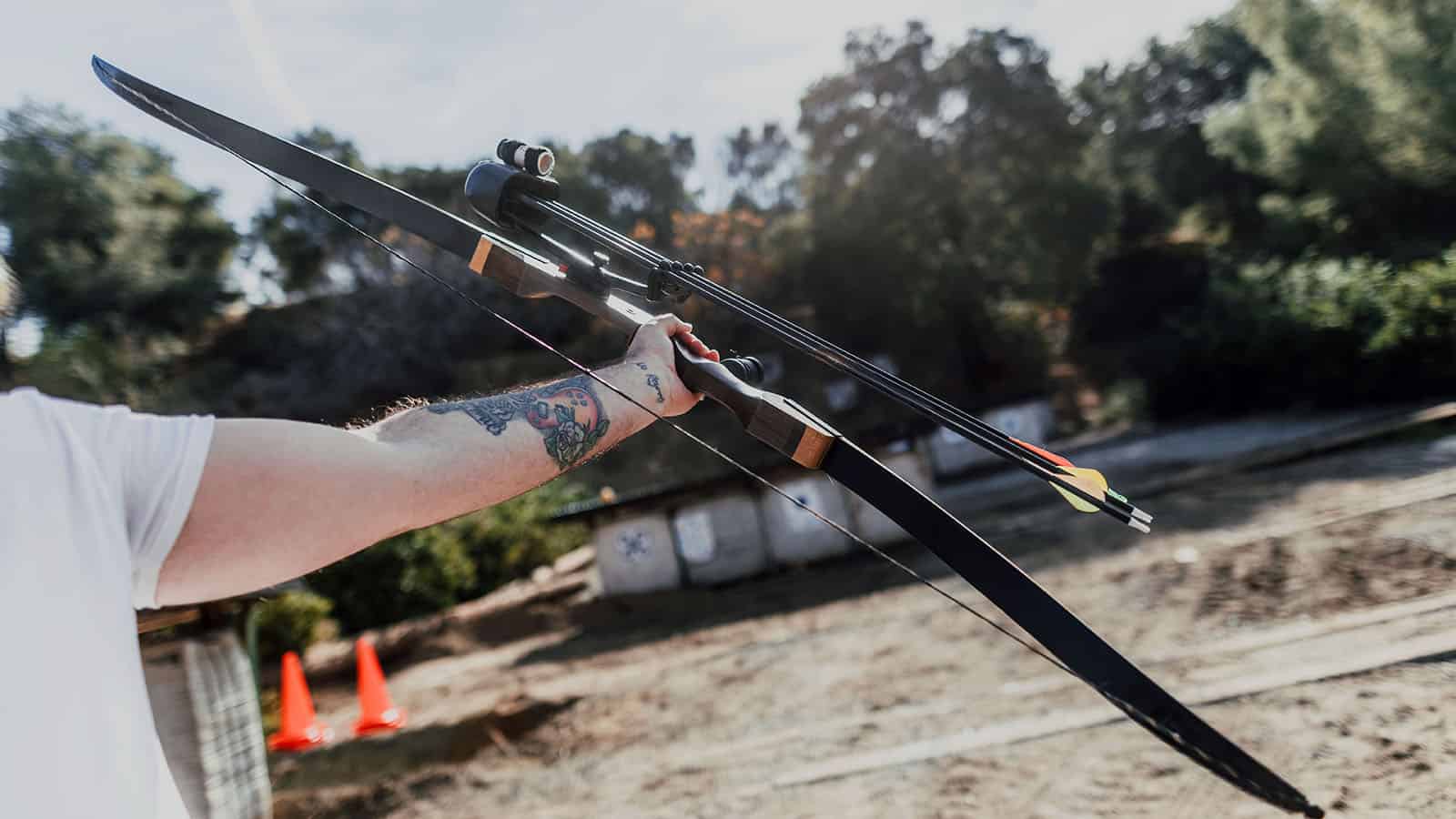A bow is a weapon that is made up of a few parts. These parts work together to help you shoot an arrow accurately. Knowing about the different parts of a bow is important if you want to get into archery. In this article, we will talk about the anatomy of a bow and explain the different parts that make up a bow.
A bow typically consists of four main components:
- Limbs: The flexible parts of the bow that store energy when the bowstring is pulled back
- Riser: The central part that holds the limbs together and provides a grip for holding the bow and resting the arrow
- Bowstring: The string that transfers energy from the bow to the arrow upon release
- Cams and pulleys (for compound bows): These are extra parts that aid in the movement of energy and make pulling and releasing the bow easier
It’s important to choose the right bow based on your needs, draw weight, draw length, and size. In the following sections, we’ll discuss the anatomy of each type of bow and explain how to choose the right one for you.
Components of different types of bows
Bows are designed for specific purposes, with each type having its own unique features and components. Recurve bows and longbows are commonly used for traditional archery and hunting, while compound bows are preferred for competitive target shooting and hunting. Understanding the different bow components and their functionalities is crucial in selecting the right type of bow for the desired activity.
If you want to explore different types of bows, you can read this article.
Recurve bow
The recurve bow is a traditional bow that has been used for centuries. It is often used in archery competitions as well as hunting. This bow has several key components that work together to make it an effective tool for archers.
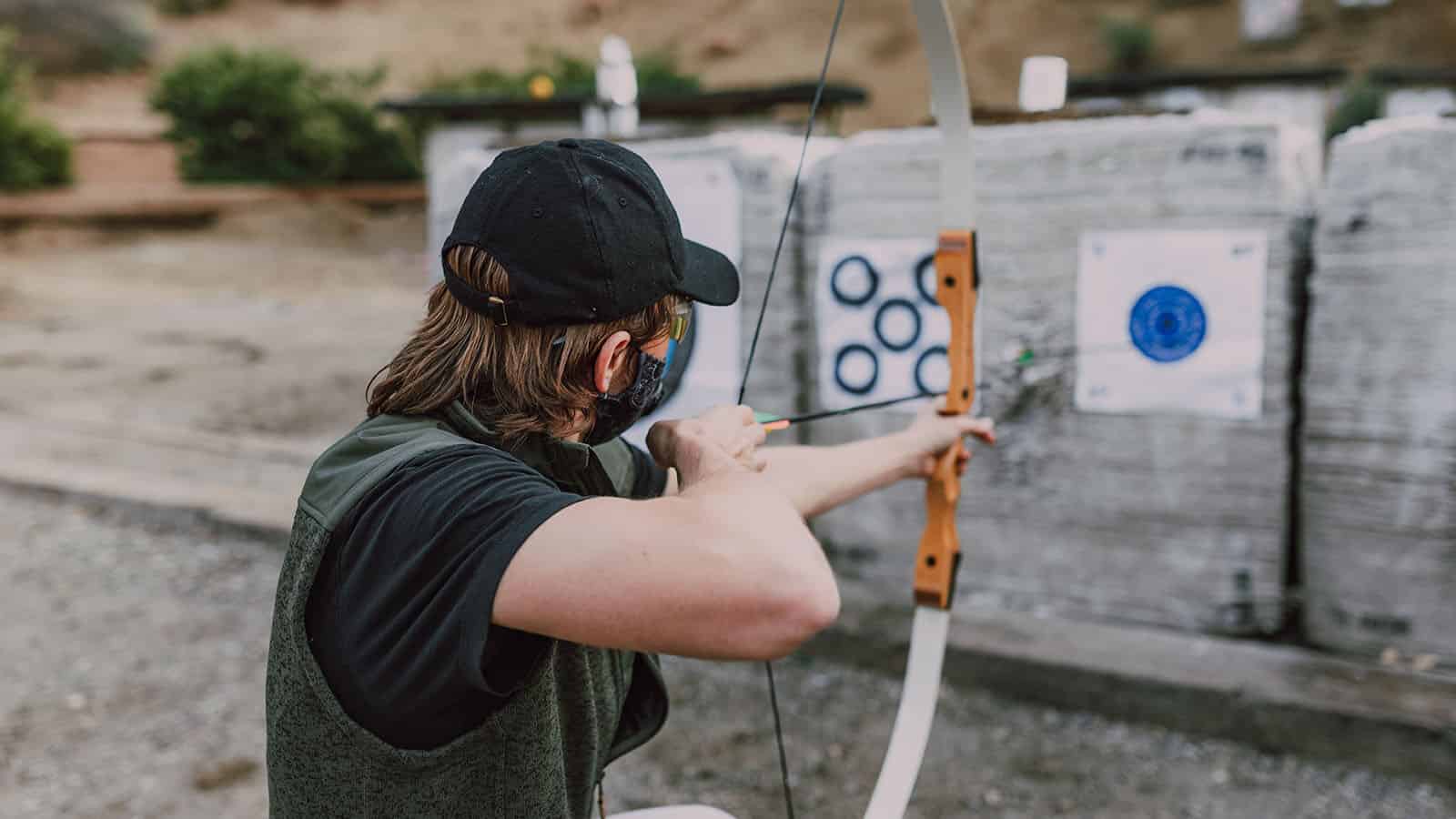
- The limbs of the recurve bow are the flexible parts that store energy when the bowstring is pulled back. They’re curved away from the archer, which gives the bow more power and speed.
- The riser holds the limbs together and provides a place for the archer to hold the bow. It’s the central part of the bow that connects the upper and lower limbs.
- The bowstring connects the limbs and is what propels the arrow forward when released. It’s made of a strong material that can withstand the tension of being pulled back and released repeatedly.
- The arrow rest is a small shelf on the bow that holds the arrow in place before shooting. It helps ensure consistent arrow placement and prevents the arrow from falling off the bow. To learn more about arrows, check out our article: Arrow anatomy.
- The nocking point is a small piece of metal or plastic that secures the arrow to the bowstring. It ensures the arrow is in the correct position for a successful shot.
- The brace height is the distance between the bowstring and the grip. It can affect the bow’s performance, and finding the right brace height is crucial for accuracy and comfort.
- The sight is an accessory that helps the archer aim accurately. It’s often adjustable and can be customized to the shooter’s preferences.
- Stabilizers are added to reduce vibrations and make the bow steadier. They’re often attached to the front of the bow and help balance the weight of the bow.
- The quiver is used to store arrows for quick and easy access during shooting. It’s often attached to the bow or worn on the shooter’s person.
Compound bow
A compound bow is a modern bow that uses a system of pulleys and cables to bend the limbs and provide the archer with a mechanical advantage. The compound bow has several key components that work together to make it an efficient and powerful tool for archery. To better understand the anatomy of a compound bow, it’s essential to look at a bow diagram, which shows the different parts and how they function together.
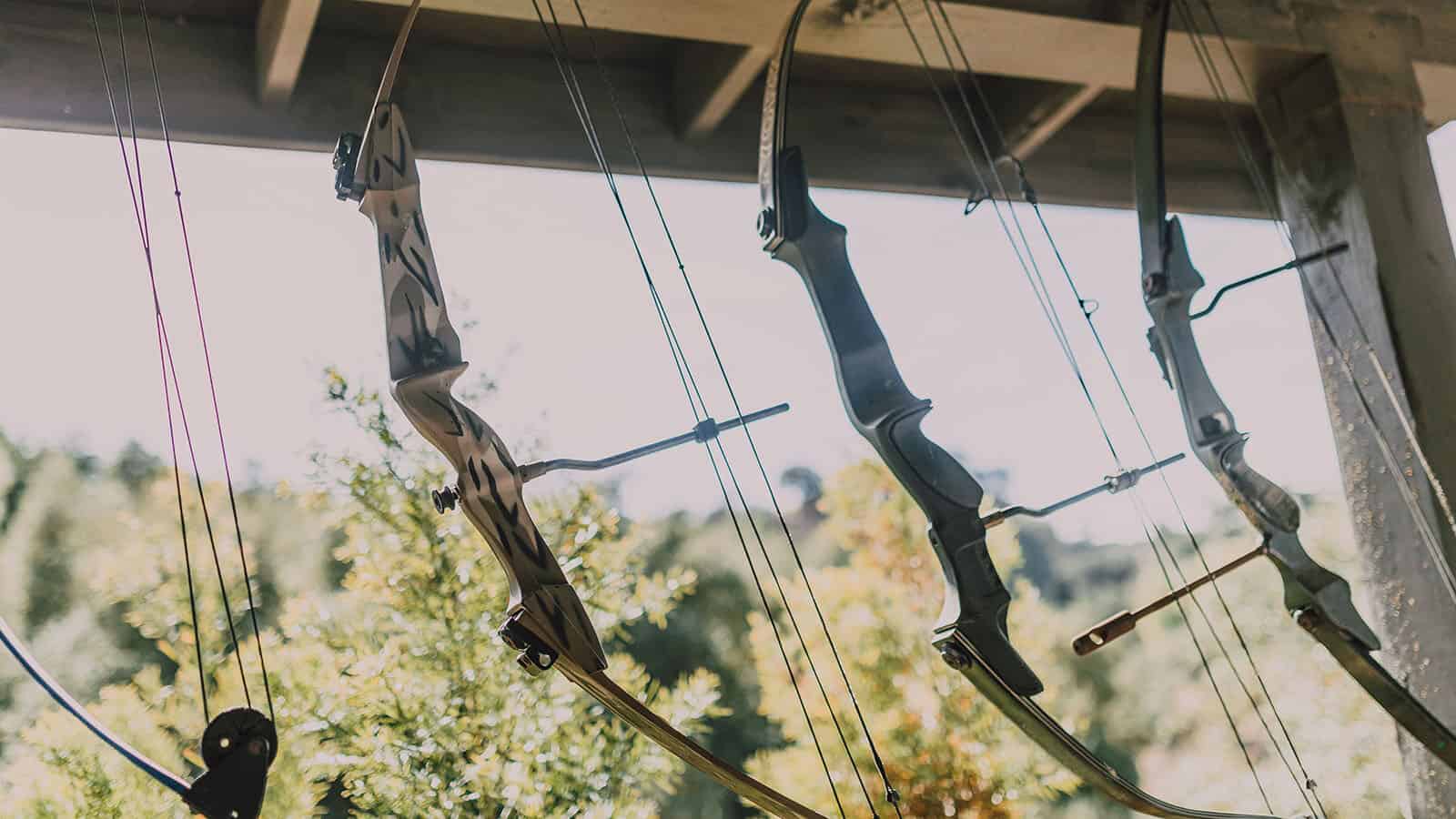
- Cams and wheels: The cams and wheels are a unique feature of the compound bow. They work to create a let-off effect when the bowstring is drawn back. This allows the archer to hold the string longer and aim more accurately.
- Riser: The riser is the central part of the bow, which holds the grip and provides a place for the limbs and accessories to attach.
- Limbs: The limbs of a compound bow are typically stiffer and shorter than those of a recurve bow, which provides more power and speed.
- Bowstring: The bowstring connects the cams and wheels and is what propels the arrow forward when released.
- Cable guard: The cable guard keeps the cables from interfering with the arrow’s flight path.
- Cable slide: The cable slide is a small plastic piece that helps guide the cables during the draw cycle.
- Cable rod: The cable rod is a metal rod that helps keep the cables aligned and reduces friction.
- Stabilizers: Stabilizers are accessories that help reduce vibration and make the bow more steady.
- Sights: Sights are used to help the archer aim more accurately.
- Arrow rest: The arrow rest is a small shelf on the bow that holds the arrow.
- Release aid: A release aid is a tool used to help an archer release the bowstring. It’s a mechanical device that makes the process smoother and easier.
Longbow
The longbow is a traditional bow that has been used for centuries. It consists of a few key components that work together to make it a reliable tool for archers.
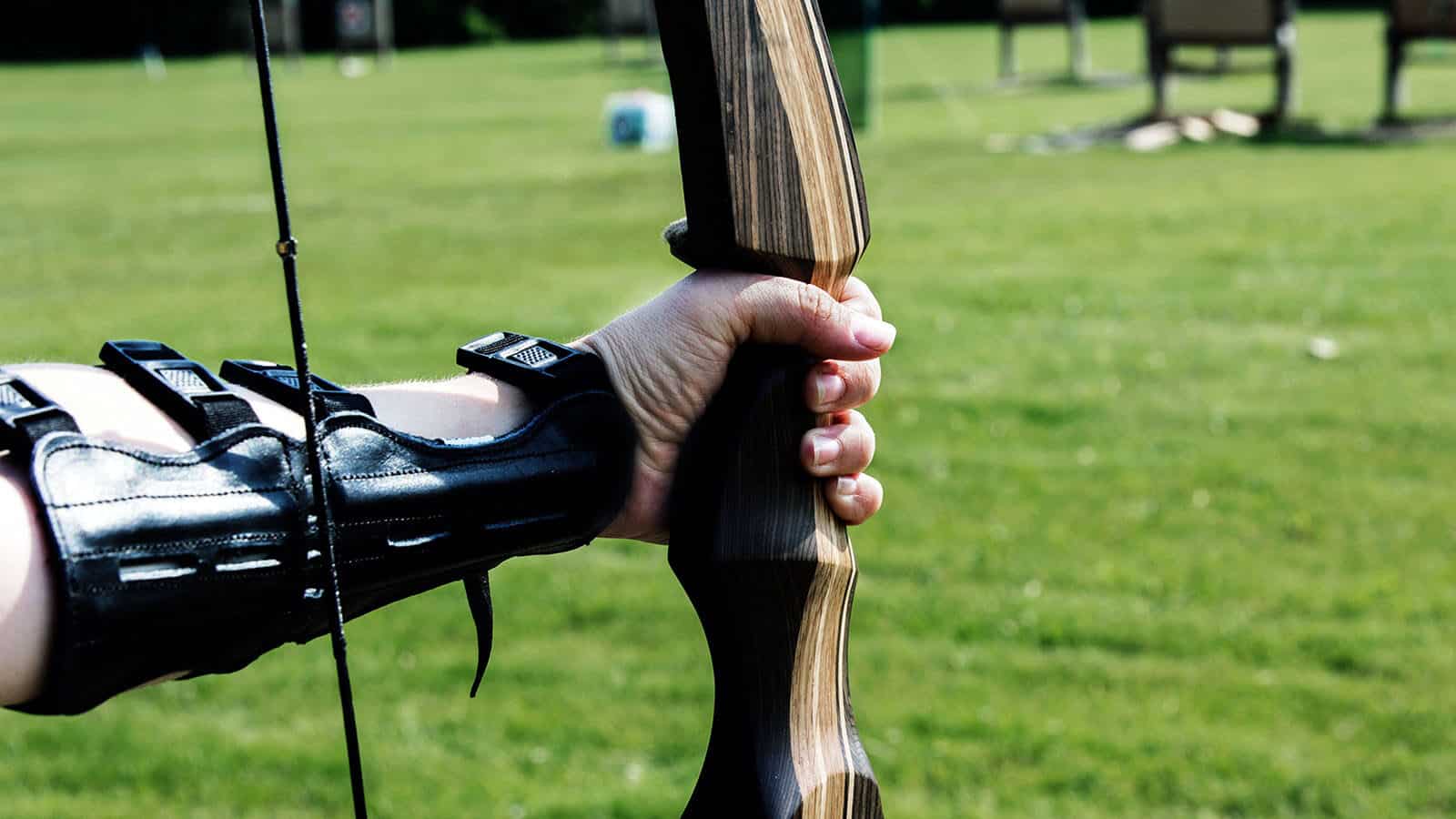
- The limbs of the longbow are long, straight, and narrow. They don’t have the curved shape of a recurve or compound bow, which gives them a unique appearance.
- The riser is a handle located in the center of the bow that the archer holds onto.
- The bowstring connects to the limbs and is what propels the arrow forward when released.
- The arrow rest is a small shelf on the bow that holds the arrow.
- The nocking point is a small piece that helps hold the arrow to the bowstring.
- The string silencers make the bowstring less noisy, so it’s less likely to scare away game animals.
- The bow grip is part of the longbow where the archer holds it.
- The string keeper, a small device, keeps the bowstring in place when it’s not being used.
How to choose the right bow
If you want to be a good archer, make sure you have the right bow. There are many things to think about when choosing a bow, such as the draw weight, draw length, and bow size.
Draw weight
The draw weight is the amount of force needed to pull the bowstring back to its full length. It’s important to pick the right draw weight for your age, gender, and level of shooting experience. If an archer chooses a bow with too much draw weight, they could hurt themselves or lose their accuracy. If they pick a bow with a draw weight that is too low, it might not work at all.
See our blog post on choosing the right draw weight for your bow for more information on how to do this.
Draw length
The draw length is the distance between the bowstring and the bow grip when the bow is fully drawn. It’s important to choose the right draw length for your shooting style and arm length. If you don’t have the right draw length, you might not hit your target or even hurt someone.
For more information, check out this article.
Size of bow
For the best fit and comfort, it’s also important to choose the right size bow. What size bow you need will depend on how you shoot and how tall you are. If you choose a bow that is too big or too small, it could hurt you or damage something else.
Before buying a bow, getting the right draw weight, draw length, and bow size is very important. Archers with a lot of experience can help you find the right bow size and specs by looking at your arms length, height, and how you shoot.
Conclusion
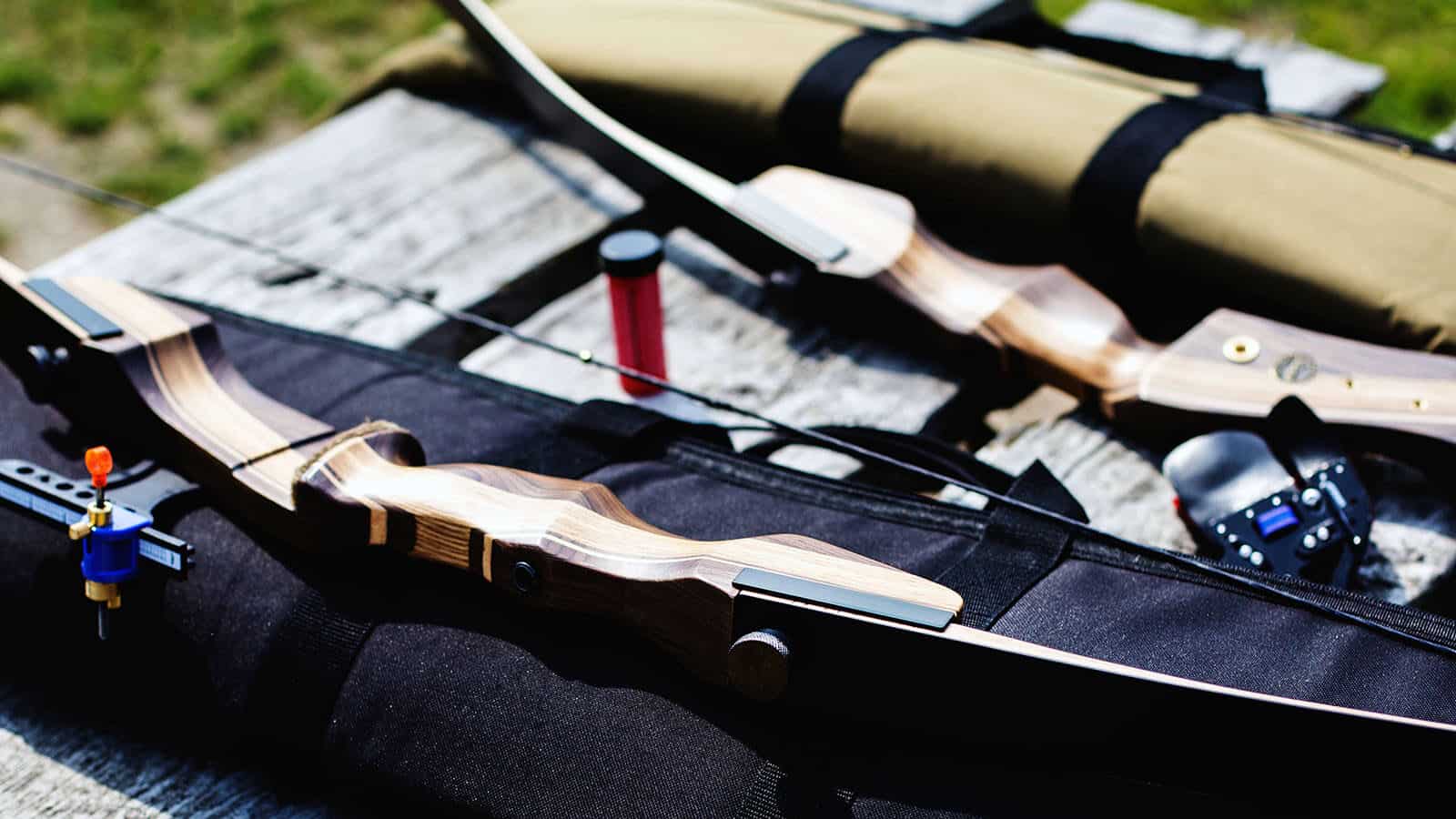
Archers need to understand bow anatomy so they can shoot more accurately and stay safe. In this article, we’ve talked about the different types of bows, their parts, and the pros and cons of each. We’ve also talked about how draw weight, draw length, and bow size can help you pick the right bow.
The limbs, the riser, the bowstring, and the cams and pulleys are the four main parts of a bow. The way the bow works and what it can do depend on every part of it. Choose the right bow based on draw weight, draw length, and bow size for a good fit and comfort. This can make it easier to hit your target and keep you from hurting yourself.
At the end of the day, every archer needs to know how a bow is made. Learn about the different parts of a bow and how to choose the one that will work best for you. This will help you shoot better and stay safe. We hope you learned something about bows and how to choose and use one from this article.
Remember that practicing and waiting are the best ways to get better at archery. You can reach your goals and enjoy archery for a long time if you have the right gear and know how to use it.
